The Congregation has tightened its grip and a relic from the past has made an unwelcome return, as the All Souls trilogy approaches its hotly anticipated climax. Will Diana finally fulfil her enormous potential? Will Peter Knox's balls really start swinging? We're ramping up to the finale of the bewitching series, so read on to find out how to watch A Discovery of Witches season 3 online no matter where you are in the world right now.
Revolution hangs thick in the air as Diana and Matthew return to present day Sept-Tours to a scene of scandal and tragedy. If Peter Knox was hoping to subjugate them once and for all, he's gone about it in entirely the wrong manner.
Backed into a corner and with no clear escape route, they have only one choice: to go on the offensive. But in order to stand any chance against the established order, they first need to turn enemies into allies.
Matthew is forced to confront the consequences of his violent past, while it's imperative that Diana, with Peter Knox and Satu breathing down her neck, completes the Book of Life.
Follow our guide below as we explain how to watch A Discovery Of Witches season 3 online from anywhere.
How to watch A Discovery Of Witches online from outside your country
If you’re abroad when A Discovery Of Witches season 3 airs, you won't be able to watch the show as you normally would at home, because of annoying regional restrictions.
Luckily, there’s an easy solution. Downloading a VPN will allow you to stream it online no matter where you are. It's a simple bit of software that changes your IP address, meaning that you can access on-demand content or live TV just as if you were at home.
Use a VPN to watch A Discovery Of Witches season 3 from anywhere

How to watch A Discovery Of Witches season 3 online in the UK

How to watch A Discovery Of Witches season 3 online in the US

How to watch A Discovery of Witches season 3: stream all-new episodes online in Canada
How to watch A Discovery Of Witches season 3 FREE in Australia
Samsung Galaxy S22 Ultra vs Samsung Galaxy S21 Ultra: stylus over substance?
After countless leaks and rumors, Samsung has finally announced its 2022 flagship smartphone range, and the most exciting of the three is the Samsung Galaxy S22 Ultra .
This is a top-spec'd phone that combines the attributes of two of the best phones Samsung has made over the past two years. It’s a bit of a monster.
So how does it compare to its immediate predecessor, the Samsung Galaxy S21 Ultra ? We rated the Galaxy S21 Ultra as the best phone of 2021, so the Galaxy S22 Ultra has quite a fight on its hands here.
We haven’t had a chance to fully put the Samsung Galaxy S22 Ultra through its paces just yet, but here’s how the two phones compare on paper.
Samsung Galaxy S22 Ultra vs Samsung Galaxy S21 Ultra price and availability
The Samsung Galaxy S22 Ultra was unveiled on February 9, 2022. There are going to be four variants, with prices starting from $1,199.99 / £1,149 / AU$1,849 for the 8GB of RAM/128GB of storage model, moving up to $1,299.99 / £1,249 / AU$1,999 for 12GB/256GB, $1,399.99 / £1,329 / AU$2,149 for 12GB/512GB, and topping out at $1,599.99 / £1,499 / AU$2,449 for the 12GB/1TB top dog.
The Samsung Galaxy S21 Ultra landed on January 29, 2021. Prices started at $1,199 / £1,149 / AU$1,849 for the 128GB model. The 256GB model costed $200 / £200 / AU$300 more, and the 512GB model increased the price again by the same amount.
So the starting price hasn't changed, but for more storage you're saving money with the newer version.
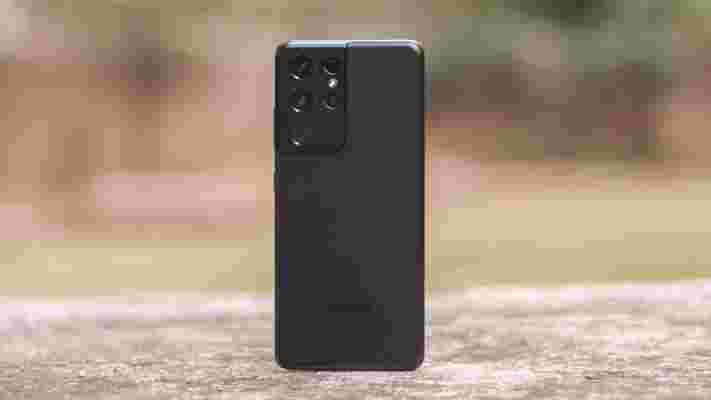
Design
If we’re talking cold hard measurements, then the Samsung Galaxy S22 Ultra and the Samsung Galaxy S21 Ultra are pretty similar. The Galaxy S22 Ultra measures 163 x 77.9 x 8.9mm, while the Galaxy S21 Ultra is just a tiny bit taller and narrower at 165.1 x 75.6 x 8.9mm.
The weights are similar, too, at 229g for the Galaxy S22 Ultra and 228g for the Galaxy S21 Ultra.
Both have an IP68 rating, so they’re just as water and dust resistant as one another. But the designs of both phones are fundamentally different.
The Galaxy S22 Ultra takes far more from the Samsung Galaxy Note 20 Ultra than it does the Galaxy S21 Ultra. It’s got the same boxy shape, with abruptly curved-off sides, sharp corners, and flat top and bottom edges. Conversely, the Galaxy S21 Ultra is all curves and swoops.
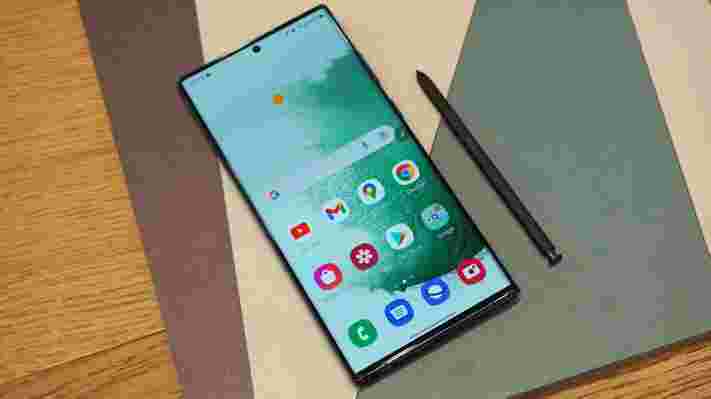
That extends to the Samsung Galaxy S21 Ultra’s camera module, which melds directly into the frame of the phone whilst standing well above the rear panel. The Galaxy S22 Ultra, by contrast, has an unusually flat camera module.
While we like the Galaxy S21 Ultra’s design a lot, we’re glad that Samsung hasn’t left one of its most iconic smartphone designs to wither. Of course, we’ll have to go hands-on with both together to know which we prefer.
Display
There’s very little between the two displays on offer here. Both are 6.8-inch Dynamic AMOLED 2X panels with QHD+ resolutions and 120Hz refresh rates.
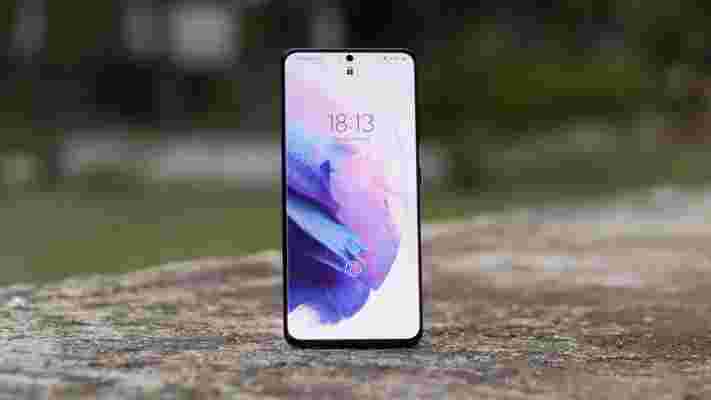
Some of the fine details favor the Galaxy S22 Ultra, however. The newer phone applies a more adaptable form of LTPO technology, meaning it can scale its refresh rate right now to 1Hz. The Galaxy S21 Ultra can only drop to 10Hz.
This isn’t an image quality issue, of course, but it does mean that the Galaxy S22 Ultra’s screen is the more efficient of the two.
Another advantage for the Samsung Galaxy S22 Ultra's display is that it gets brighter to the tune of 1,750 nits, whereas the Samsung Galaxy S21 Ultra can only manage 1,500 nits.
We say ‘only,’ but both are incredibly bright by modern standards, so it’s hardly a massive win for the newer phone.
All in all, the Samsung Galaxy S21 Ultra had one of the very finest displays of 2021, and we’re expecting the Galaxy S22 Ultra to have one of the very finest displays of 2022.
Camera
As with the display, there appears to be very little between the camera systems of these two phones.
Both phones lead with a 108MP main sensor and an f/1.8 aperture. Both also have 12MP ultra-wides with f/2.2 apertures.
Completing the sense of déjà vu, both Ultra phones pack 10MP telephoto sensors, one for a 3x optical zoom and the other for a 10x optical zoom.
Wouldn’t you know it, even the selfie cameras seem to be the same 40MP sensor with an f/2.2 aperture.
This lack of obvious advancement might be a bit of a disappointment. Given how much the Samsung Galaxy S21 Ultra impressed us in 2021 though, particularly with its excellent zoomed shots, this isn’t necessarily a bad thing.
Especially given that there have been some major advancements in the AI department. If there’s been one area where Samsung’s camera department has fallen behind Apple’s and Google’s, it’s with its algorithms, so this could be a good thing.
We're also seeing other advances in the software here, with new features like Advanced Nightography for improved low light performance. It remains to be seen how much of a difference these software updates will make in practice though.
Specs and performance
The Samsung Galaxy S22 Ultra will come powered by either a Snapdragon 8 Gen 1 or Samsung’s new Exynos 2200 chip, depending on your region. Both are 4nm chips, and we’re expecting both to provide more or less the same level of power.
This is something we’ll have to test for ourselves, but early signs are that neither of these chips provide a huge step forward in performance over their 5nm predecessors used in the Samsung Galaxy S21 Ultra.
Those chips are the Snapdragon 888 (in the US and China) and the Exynos 2100 (everywhere else). Early benchmarks suggest that CPU performance is broadly similar, while GPU performance is the biggest advance.
One that front, the most interesting point is that the Exynos 2200’s AMD GPU shares the same RDNA2 architecture as the PS5 and the Xbox Series X . It could provide some advanced effects in games, if developers choose to implement them. That’s quite a big ‘if’ at this point though.
All of this means that you probably won’t notice much of a performance difference between the Galaxy S21 Ultra and the Galaxy S22 Ultra. They’re both fast, smooth operators.
One interesting spec that actually goes in the older Samsung Galaxy S21 Ultra’s favor is RAM. While both phones treat 12GB as the standard, the entry-level Samsung Galaxy S22 Ultra only gives you 8GB. Meanwhile, the top Galaxy S21 Ultra option lays on 16GB.
The newer phone strikes back with the offer of 128GB, 256GB, 512GB, and now 1TB internal storage options. There’s no 1TB option with the Samsung Galaxy S21 Ultra.
Another win for the Galaxy S22 Ultra comes with its S Pen offering. While both phones technically support Samsung’s stylus, only the Galaxy S22 Ultra integrates it as tightly as the old Galaxy Note range, even going so far as to house a compact stylus within its body.
Battery
Both phones give you large 5,000mAh batteries. But then, they need a chunky cell with such power-hogging components.
We found the Galaxy S21 Ultra’s battery performance to be solid during our test period, with a full charge sufficient to get us through a full day and change. That was with the screen settings scaled back, however. We emptied the tank much more quickly when we pushed that 120Hz screen refresh rate to the max and cranked up the resolution to QHD+.
Hopefully the fact that the Samsung Galaxy S22 Ultra can scale its display right down to 1Hz, in addition to a more efficient processor (on paper) will improve things for the newer phone.
One area in which the Galaxy S22 Ultra is quite clearly an improvement over its predecessor is charging speed. At 45W, it’s finally befitting of a flagship phone after the 25W Samsung Galaxy S21 Ultra.
This still falls short of the OnePlus 10 Pro with its 80W charging and the Xiaomi 12 with its 67W charging, but it should provide an improvement nonetheless. Unlike those aforementioned rivals though, Samsung doesn’t bundle a charger in the box with either of its Ultra phones.
Both phones offer 15W wireless charging and reverse wireless charging.
Takeaway
The Samsung Galaxy S22 Ultra promises to be a fascinating evolution of the Samsung Galaxy S21 Ultra concept. Or rather, a splicing.
With its design and its built-in S Pen stylus, the Galaxy S22 Ultra is shaping up to be as much a successor to the Samsung Galaxy Note 20 Ultra as its immediate predecessor.
We’re fascinated to see just how much better than the S21 Ultra the Galaxy S22 Ultra will be given how similar its display, camera, and even performance appear to be on paper.
Could it really all come down to that built-in S Pen? And will the brilliant Samsung Galaxy S21 Ultra prove to be the better bet if you can pick up a good deal?
Rest assured that we’ll be putting this new phone through a full review to find out the answers very soon.
TechRadar's Year in Review: missing phones, broken Windows and cool wires
A note from our Global Editor in Chief, Gareth Beavis:
Firstly, I'd like to say Happy New Year to all of our readers - without you, this site would be nothing but a weird vanity project that sees a few writers and editors telling each other which tech to buy. But thankfully we have millions of other people look at this site each month, and not a day goes by when I'm not incredibly grateful for that opportunity to help you buy the tech you love.
While we've got a lot to look forward to in 2022 - both in terms of TechRadar and the wider world of tech that we cover - 2021 deserves to be mulled over one final time, before putting it in a drawer in your mind and never examining it again.
In a year that began with Delta and ended with Omicron, it's impossible to ignore the impact of the pandemic on the world of tech over the past 12 months – so much was delayed, or outright cancelled, as a result of the disruption the virus wrought on global manufacturing and supply chains. However, there were still plenty of product launches to get excited about, and flashes of innovation that got us talking. For our round-up of 2021, TechRadar's editors and writers have been looking back on the year that was in their particular field – and looking forward to what's coming down the line in 2022.
The big names get some serious competition, and foldables get good
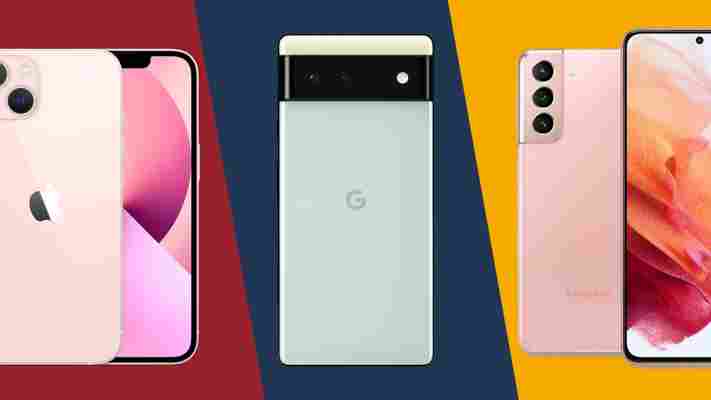
James Peckham, Phones Editor, writes… 2021 has been an odd year for smartphones, with a multitude of delayed launches, and some notably 'missing' handsets that we thought we'd see – for example, there was no Samsung Galaxy Note 21 or OnePlus 9T. Much of this is due to the ongoing impact of the pandemic on global manufacturing and supply chains.
We have, though, still seen a whole host of fantastic handsets launched in the past 12 months, from the Samsung Galaxy S21 and iPhone 13 series to Google's Pixel 6 duo, while brands such as Xiaomi, Oppo, Realme and OnePlus really established themselves as top-tier players with impressive releases.
2021 was also the year that foldables came of age. The Samsung Galaxy Z Fold 3 was a highlight for those looking for a folding smartphone that really works, although it's still eye-wateringly expensive. Elsewhere, 5G increasingly became the mainstream standard for connectivity, with most new smartphones supporting it and network coverage expanding around the world. The smartphone world also lost one of its big names, with LG announcing that it would cease making new handsets; sadly this means the previously revealed LG Rollable won't be seeing the light of day.
2021 hasn't been a game-changing year for mobile technology, but the field has seen a steady stream of improvements and innovations that have kept things interesting both for those who follow the industry and for those of us looking to upgrade our phones. You can catch up with all the biggest developments in our round-up of the year in phones .
Chip shortage fails to stem a tide of innovation
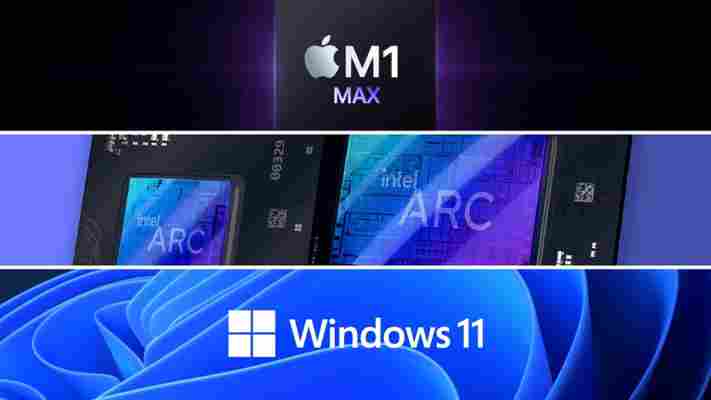
Jessica Weatherbed, Computing Writer, writes…
2021 has been a rollercoaster ride for the computing market, with the ongoing chip shortages making graphics cards harder to find than a needle in a haystack for PC gamers and desktop building enthusiasts. Meanwhile, Apple enjoyed seeing customers scrambling to get their hands on its latest M1 Pro and M1 Max-powered MacBook Pro laptops.
It wasn't all doom and gloom for Windows users, with the Windows 11 operating system releasing on October 5. It received a mixed but generally positive response, although predictably Microsoft has had to release a stream of bug fixes and updates to address issues and add improvements in response to user feedback. Microsoft also refreshed its Surface line, with new devices including the innovative Surface Laptop Studio .
As we move into 2022 we're looking forward to seeing a new generation of super-powered hardware, with Apple continuing to improve its own silicon, Intel announcing plans to enter the desktop graphics card market with the Arc Alchemist (creating the possibility of an all-Intel build), and super-speedy DDR5 memory modules increasingly replacing DDR4.
Nikon delivers a retro treat and AI gets creepy-clever
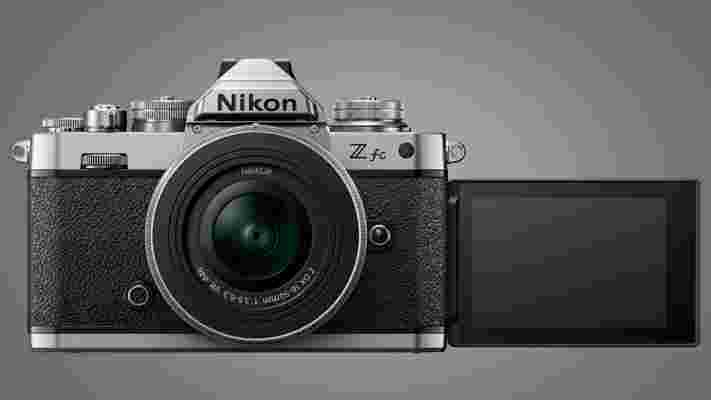
Mark Wilson, Cameras Editor, writes…
It's been another massive year of innovation for photography, if a more subdued one for new cameras. The chip shortage has put the brakes on launches, with some new models (like the Panasonic GH6) pushed back to 2022 and others (see the Sony ZV-E10) pulled out of production just months after they arrived. But it's still been a big year for new professional bodies: the Sony A1 , Canon EOS R3 and Nikon Z9 are incredible full-frame powerhouses that have hammered the final nail in the coffin of DSLRs.
Back in the realm of cameras that most of us can actually afford, the highlight was arguably the Nikon Z fc . A mirrorless reincarnation of the 30-year-old Nikon FM2, it's a beautiful camera that delivers something that's all too easy to forget in a world of stacked sensors and 30fps burst modes: fun. Nikon still needs to make more lenses for the Z fc, but for casual photography it's a great alternative to Fujifilm's retro rivals. For those with a slightly bigger budget, Sony also delivered the excellent A7 IV , which is the best all-rounder for stills and video that you can buy right now.
2021 also saw AI and machine learning ripping up the photography rulebook, with powerful editing software like Photoshop and Luminar AI challenging the definition of what a photo actually is – is replacing your scene's real-world sky with a simulated one still 'drawing with light'? The debates have raged, and not just about editing – back in February, a new tool called Deep Nostalgia went viral thanks to its slightly unsettling ability to animate your old family photos.
So what about the coming year? We've polished our crystal ball, and made our predictions for the big camera and photography trends of 2022 .
Wireless buds get some serious sonic upgrades
Olivia Tambini, Audio and Music Editor, writes…
It's been an exciting year in audio , with a rash of new products, innovations in wireless sound technology, some weird trends, and the continuing comeback of vinyl in a world largely dominated by Spotify, Apple Music and other streaming platforms. One of 2021's big launches was the Apple AirPods 3 , a new and improved version of its most popular true wireless earbuds. Coming with support for Spatial Audio – a technology Apple has gone big on for its Apple Music streaming service and Apple TV Plus – they were received enthusiastically by those who felt the 2019 AirPods were overdue an upgrade.
They weren't the best earbuds we tested this year, though. From the all-round excellence of the Sony WF-1000XM4 to the supremely customizable NuraTrue , 2021 was an exciting year for wireless in-ears.
Oddly though, wireless headphones are being spurned by youthful fashionistas of today. As evidenced by Instagram account Wired It Girls, wired earbuds appear to be the preference of the young and hip crowd. Will this trend continue into 2022? Probably not – as with the renewed interest in Y2K microtrends like trucker hats and velour tracksuits, we suspect this particular fad will be a flash in the pan. So no, we won't be throwing our wireless headphones in the trash just yet.
Mini-LED is so 2021 – the future is QD-OLED
Nick Pino, Senior Editor, Home Entertainment, writes…
We got acquainted with mini-LED TVs in 2020, but 2021 was the year that we finally welcomed the brighter, higher-contrast screens into our homes, from Samsung's Neo QLED lineup to LG's QNED models .
While most of the big innovation was in higher-end sets, budget buyers in the US were treated to a sampling of the technology in the TCL 6-Series QLED with Mini-LED for a very reasonable price. We're hoping the technology continues to make its way down the price range in 2022 as we look forward to the arrival of an even newer panel technology: QD-OLED .
QD-OLED screens combine the refined black levels and deep contrast of OLED with the color saturation of Quantum Dots. By boosting the amount of light an OLED pixel can put out and further enhancing the colors through a Quantum Dot filter, these screens are being talked about as the next big evolution in displays.
Here's hoping we'll get our first look at TVs featuring the tech at CES 2022; in the meantime check out our pick of 2021's best TVs across a range of price points.
Would you pay a monthly fee to see your health data?
Cat Ellis, Fitness and Wellbeing Editor, writes…
The above was the big question posed in 2021 when Amazon unveiled its new Halo View fitness tracker. It looks like a Fitbit and captures a similar array of data, but unless you're an Amazon Halo Fitness subscriber you'll only be able to see the basics. You get a 12-month trial when you buy the tracker, but once that expires you'll have to pay an additional $3.99 (about £3 / AU$5) per month to see stats like your sleep score and workout insights.
It's the same story with Oura, which released its third-generation smart ring in late 2021 alongside a new subscription service that unlocks extra health insights, audio content (such as meditation sessions) and educational content. You get six months free with the third-gen Oura smart ring, after which it costs $5.99 (about £5 / AU$8) per month, which is pretty steep considering the ring itself is £299 (about £220 / AU$420).
Fitbit won't charge you to check your workout stats, but it's also started expanding its array of member-only goodies. These include the new Daily Readiness score , which tells you how much energy you have in the tank for the day ahead based on your sleep and activity patterns, and the Sleep Animals feature, which analyzes your nightly habits and gives custom creature-themed recommendations. Fitbit Premium membership is $9.99 / £7.99 / AU$15.49 per month, though all new Fitbits come with a free six-month trial so that you can decide whether it's right for you.
In 2022 we may well start to see fitness trackers that are super-cheap to buy, but require a phone-style monthly contract in order for you to make the most of them – we'll keep our finger on the pulse and let you know.